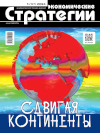International scientific and technical cooperation: from partnership to conflict
DOI: 10.33917/es-5.197.2024.32-37
International scientific and technological cooperation is a dynamic and innovative form of international economic cooperation. It involves the exchange of knowledge, technologies, and expertise between countries. However, it is often perceived as a static process, with little understanding of its dynamics. The aim of this study is to investigate the key stages of international scientific cooperation and propose a strategy for its future development. Three stages have been identified since the 1990s: the initial stage of development, the separation of developed and developing countries’ cooperation, and the current stage of technological confrontation. The study demonstrates that international scientific and technical collaboration is directly linked to globalization processes and follows their dynamics. Based on this understanding, a forecast for the future shape of international scientific collaboration is made. Scientific and technical ties will form around the core of globalization, with each core having a distinct technological focus.
References:
1. Birkinshaw J. Why do some multinational corporations relocate their headquarters overseas? available at: http://www.diva-portal.org/smash/get/diva2:487470/ FULLTEXT01.pdf
2. Li S., Alon I. China’s intellectual property rights provocation: A political economy view. Journal of International Business Policy, 2020, no 3, pp. 60–72.
3. UNESCO Science Report 2010, available at: https://uis.unesco.org/sites/default/files/documents/unesco-science-report-2010-the-current-status-of-sciencearound-the-world-en.pdf
4. UNESCO Science Report 2021, available at: https://unesdoc.unesco.org/ark:/48223/pf0000377433/PDF/377433eng.pdf.multi
5. Izvestnye initsiativy po sotrudnichestvu Yug — Yug i trekhstoronnemu sotrudnichestvu [Notable South-South and Triangular Cooperation Initiatives]. URL: https:// www.wipo.int/cooperation/ru/south_south/cooperation_initiatives.htmlhttp://www.diva-portal.org/smash/get/diva2:487470/FULLTEXT01.pdf
6. Number of college and university students from China in the United States from academic year 2010/11 to 2020/21. Statista, available at: https://www.statista.com/ statistics/372900/number-of-chinese-students-that-study-in-the-us/
7. Learning mobility statistics. Eurostat. Statistics Explained, available at: https://ec.europa.eu/eurostat/statistics-explained/index.php?title=Learning_mobility_statistics
8. Danilin I.V. Amerikano-kitayskaya tekhnologicheskaya voyna: riski i vozmozhnosti dlya KNR i global’nogo tekhnologicheskogo sektora [US-China Tech War: Risks and Opportunities for China and the Global Tech Sector]. Sravnitel’naya politika, 2020, vol. 11, no 4, pp. 160–176.
9. Executive Order 14083 of September 15, 2022 Ensuring Robust Consideration of Evolving National Security Risks by the Committee on Foreign Investment in the United States. Federal Register, 2022, vol. 87, no 181, pp. 57369–57374.
10. Chaudhuri R. How Washington and New Delhi Can Further Tech Ties, available at: https://carnegieendowment.org/files/Chaudhuri_iCET.pdf



